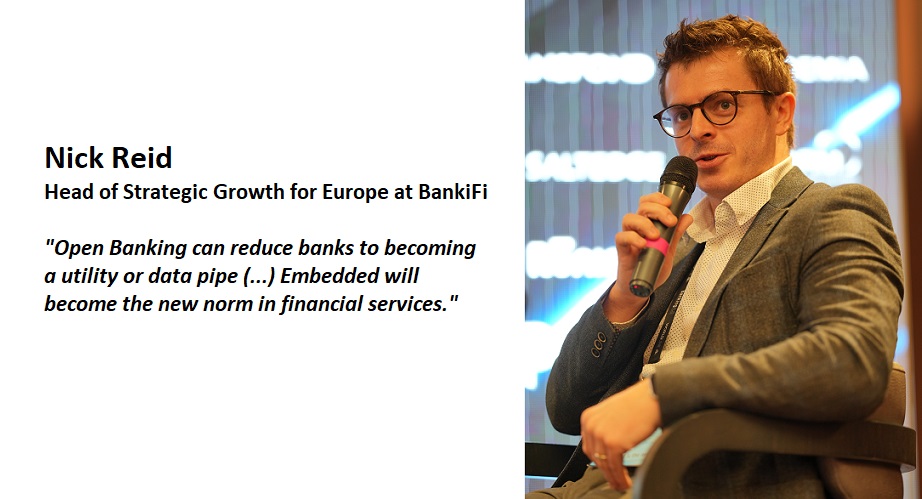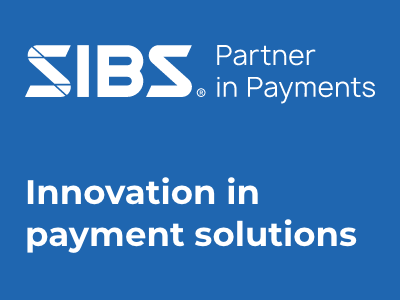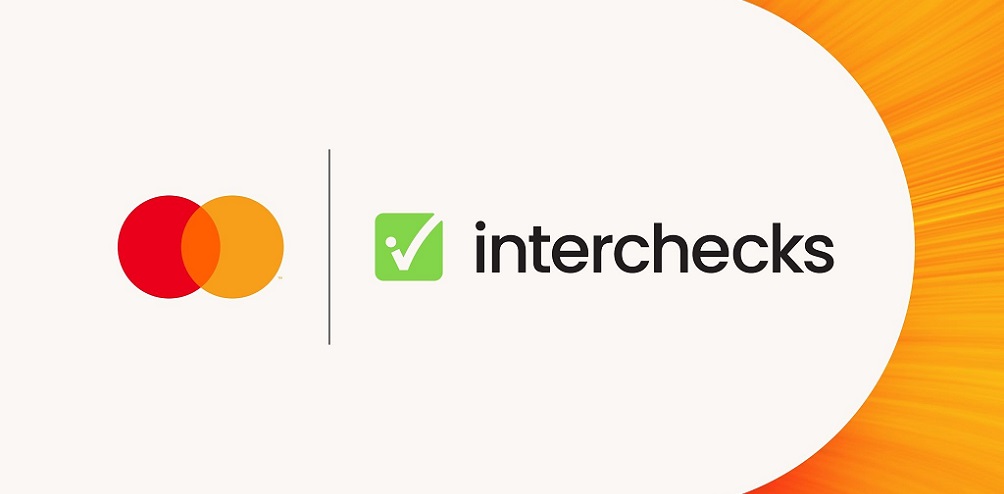Open Banking: What is the benefit for banks and what does the future hold?

an article written by Nick Reid
Is ‘embedded’ or ‘open’ banking the answer? According to BankiFi Head of Strategic Growth for Europe, Nick Reid, it is. Nick recently travelled to Bucharest for the Banking 4.0 conference where he was joined by industry experts in the Open/Embedded Banking space on the ‘Open Banking: Is it really open?’ panel.
Read on to delve into Nick’s insights from this Open Banking panel and event.
Embedded is the answer.
I was fortunate to be invited to speak recently at Banking 4.0 in Bucharest, the most relevant digital banking event in Southeast Europe.
Bringing together major players and thought leaders across the banking, payments and fintech industry, the consensus is that digital banking is at an inflection point. Embedded will become the new norm in financial services, however what role will incumbent banks, platforms and disruptive new entrants play?
The digital banking landscape in South-eastern Europe
As a panellist, my main purpose for attending the event was to share my experience and insights in the domain of Open Banking. But with my role focusing on business growth in Europe, I was also there to connect with prospective bank clients and partners who can help scale up our business.
Just as importantly, the conference was also an excellent opportunity to connect with peers and get industry insights which allow me to continue shaping our own strategy at BankiFi.
The European banking and payments industry is quite fragmented, so attending Banking 4.0 was an excellent opportunity to stay up to date with the digital banking landscape in Southeast Europe.
Open Banking. Is it really open?
The panel was moderated by Cosmin Cosma and my fellow panellists included Open Banking experts Vladimir Pintea and Niklas Sandqvist.
Our panel (and others focused on Open Banking) concluded that the inconsistent implementation of PSD2 in many parts of Europe has prevented the industry from delivering one of its core aims – encouraging more competition for payment service providers.
One of the most common challenges mentioned was the payment authentication process exposed by banks. Processes such as:
– Users having to authenticate transactions twice.
– Hastily assembled payment authentication screens that users don’t trust.
– Being directed to internet banking in a mobile browser rather than native mobile banking apps.
This is not an exhaustive list, but all these challenges result in a poor user experience, which creates the friction that is hindering Open Banking adoption.
This is increasingly significant when the panel considers providing more competition to the monopoly of the card networks. Cards are convenient. Account-to-account payments via Open Banking provide complementary payment options for merchants and customers – but simple biometric authentication, where possible, is critical to providing the same convenience as cards, especially in scenarios like invoice payments to SMEs, where cards may not be an option.
What is the answer? Who is ‘doing’ Open Banking well?
The panel and other conference attendees floated many valid suggestions as to why the implementation of PSD2 has been so inconsistent: Was the EBA too conservative in its drafting of the legislation by limiting the headroom required for true innovation? Was supervisory oversight too lenient in granting extensions to deadlines? Should punitive measures have been taken for persistent breach of deadlines? This leads to speculation about what PSD3 legislation might hold.
The UK is held up as a leader in Open Banking, where it is overseen by the FCA rather than the central bank. I almost feel guilty talking about the UK’s standardised implementation, adoption levels (4.5 million active users including 600,000 businesses) and range of use cases. The UK Government have led the way in allowing ‘pay by bank account’ for tax payments to HMRC. In the last two years, NatWest’s ‘Payit’ has helped consumers and businesses securely process over £1 billion in payments without the need to share account details. (Finextra) Other use cases include various personal and business finance management solutions.
As a panel, we are all optimistic about the future of Open Banking. We also agree that for Open Banking in Europe to truly deliver on its aims, many roads seem to lead to banks. So, what can be done?
How do we help banks to see the benefits of Open Banking?
One of the primary challenges is articulated very neatly by Arturo MacDowell on another panel: You can force banks to share data with potential competitors, but you cannot force them to do it well.
For banks to be willing participants rather than reluctant providers, we must help banks see that Open Banking as is an opportunity rather than a compliance exercise.
Open Banking can reduce banks to becoming a utility or data pipe. So how can banks commercialise Open Banking? Premium APIs are often spoken about as a way of incentivising banks to go beyond their regulatory mandate. In the UK, NatWest’s ‘Bank of APIs’ are often cited as a progressive example.
At BankiFi, our own approach is to help banks consume Open Banking to make their own digital banking channels more relevant and valuable in the eyes of SMEs – sometimes referred to as Embedded Fintech. Benefits range from customer retention and acquisition to increased deposits and lending revenues. Equally, we help banks create propositions in the more traditional sense of Embedded Finance – embedding SME banking toolkits in third-party party platforms, packaged as a bank’s. These types of propositions are estimated to be worth an incremental $92bn revenue opportunity for banks globally by 2025 (Accenture).
The Fintech industry is sometimes guilty of using provocative terms such as making banking and banks ‘invisible’. We need a much more co-operative approach for Open Banking to be a success, and banks are critical to that mission.
About Nick Reid
With 12 years’ experience in providing award-winning banking and payments technology to financial institutions globally, Nick is Head of Strategic Growth for Europe at BankiFi and is responsible for helping clients and prospects with the commercialisation of their business banking strategies and the development of their SME clients. Nick is fluent in English, French and German.
Dariusz Mazurkiewicz – CEO at BLIK Polish Payment Standard
Banking 4.0 – „how was the experience for you”
„To be honest I think that Sinaia, your conference, is much better then Davos.”
Many more interesting quotes in the video below:











